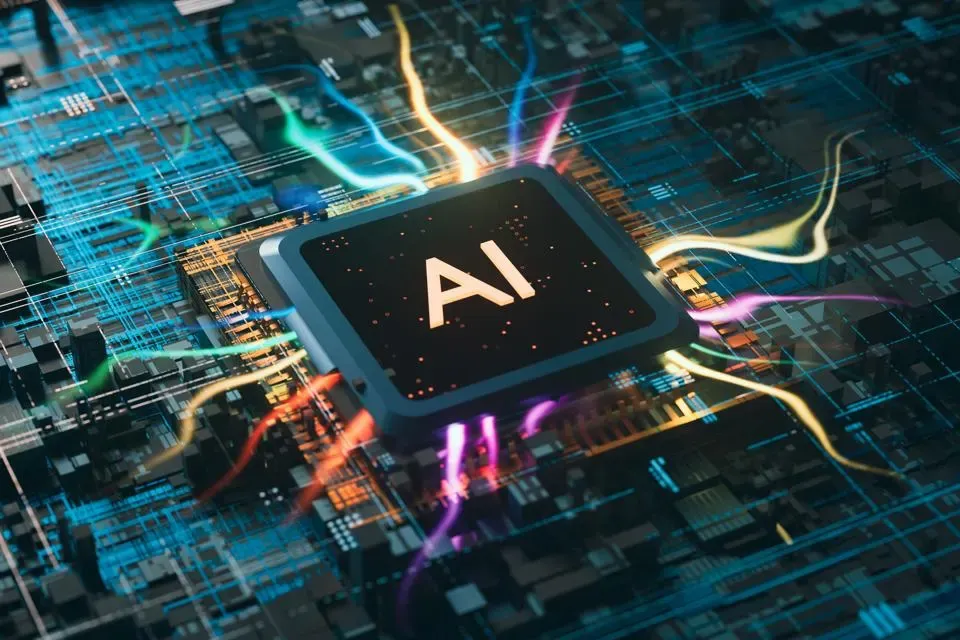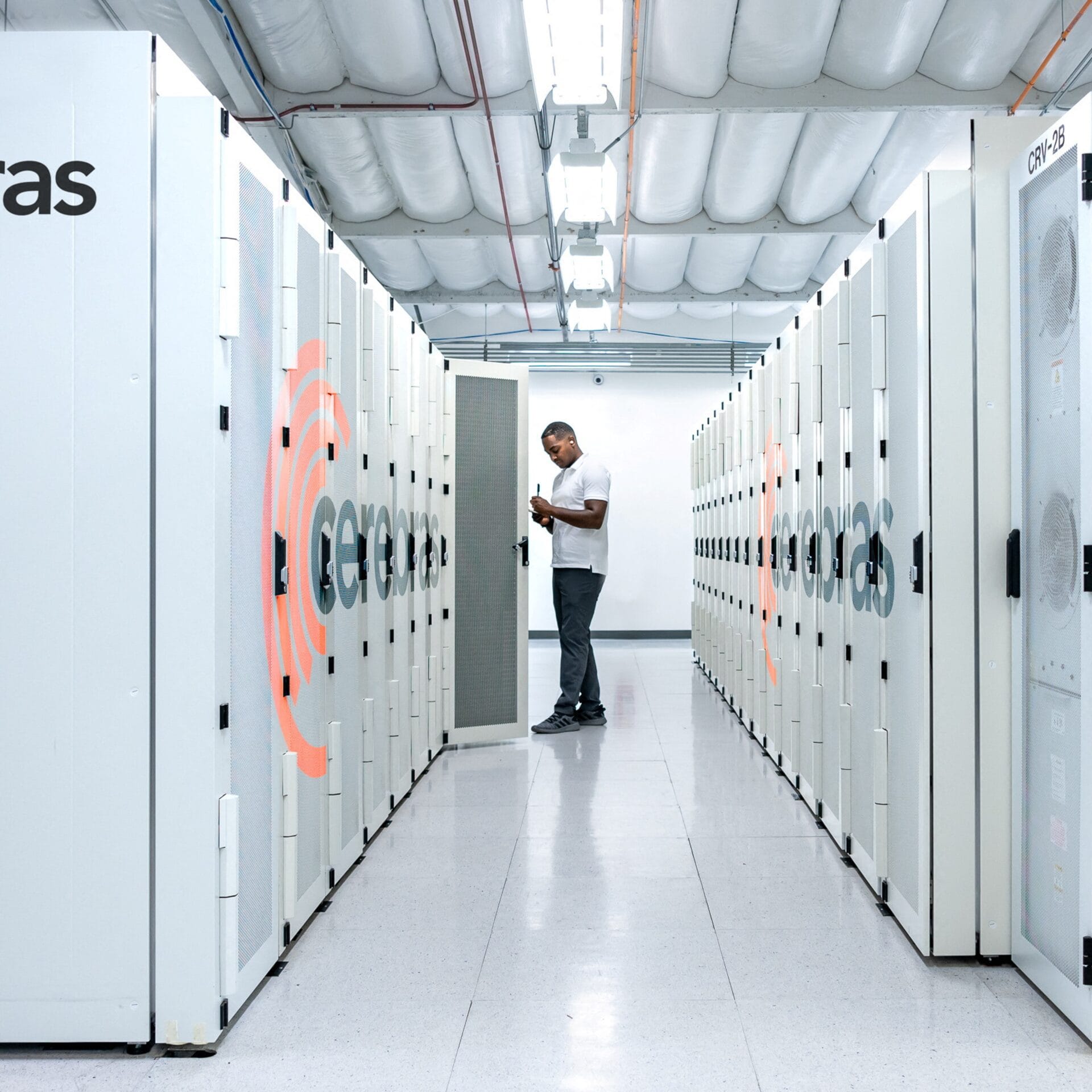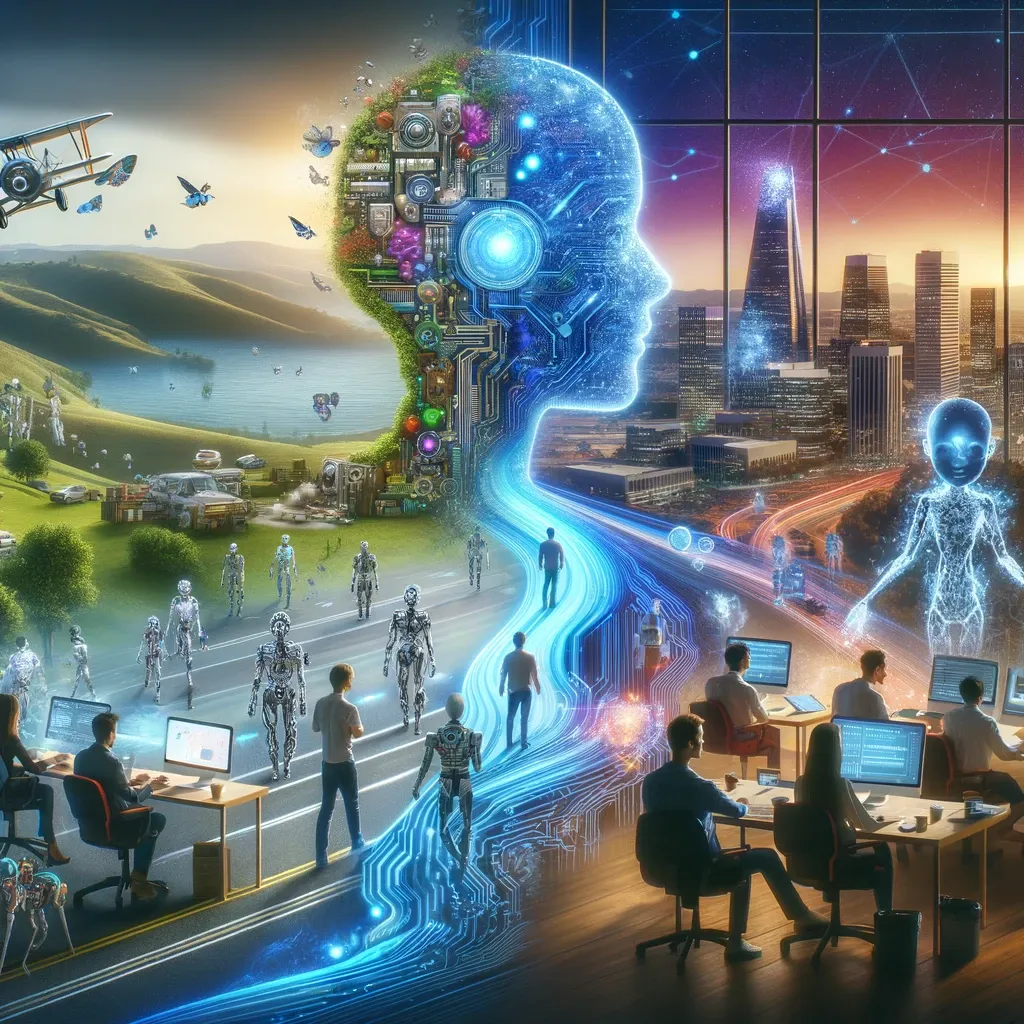Silicon Valley’s Superhuman AI Obsession: Innovation or Illusion?
Explore Silicon Valley's relentless pursuit of "god-like" AI and question if it's a true path to innovation or a financially-driven illusion.

Written by Lavanya, Intern, Allegedly The News
MENLO PARK, CALIFORNIA, August 20, 2025
The air in Silicon Valley, thick with the scent of venture capital and fresh innovation, is today charged with a singular, fervent ambition: the creation of Artificial General Intelligence (AGI). The tech world's most powerful figures, from OpenAI's Sam Altman to Tesla's Elon Musk, speak of AGI not as a possibility, but as an inevitability, a "god-like" entity poised to transform humanity. This narrative, a blend of utopian promise and existential dread, dominates headlines and dictates investment flows. But as the hype cycle reaches a fever pitch, a crucial question is being lost in the noise: Is this pursuit a genuine, strategic race towards a revolutionary new intelligence, or is it a financially-motivated illusion that distracts from the tangible, ethical, and immediate challenges AI presents today?
The Echo of Past Manias: The Dot-Com and Crypto Connection
To understand the current AGI obsession, we must look to Silicon Valley's history of techno-utopian manias. The dot-com bubble of the late 1990s was built on the promise of the internet revolutionizing every aspect of commerce and communication. Companies with little more than a catchy URL and a vague business plan saw their valuations soar into the billions. Similarly, the cryptocurrency and blockchain boom of the last decade was predicated on the belief that decentralized ledgers would upend global finance and governance. In both cases, a powerful new technology was conflated with its most speculative and far-fetched applications.
The AGI narrative fits this pattern perfectly. It operates on what economists call the "sunk cost fallacy," where billions are poured into a speculative pursuit because of the fear of being left behind. Companies like OpenAI and Google DeepMind are locked in a high-stakes game of one-upmanship, each trying to outdo the other in public announcements and model size. The logic is simple: the first to achieve AGI will control the "last invention humanity will ever need to make," a concept first articulated by I.J. Good, a British mathematician and cryptologist. This promise of an exponential, self-improving superintelligence is a powerful lure for investors, who see the potential for unimaginable returns.
However, a 2024 survey of the Association for the Advancement of Artificial Intelligence (AAAI) revealed that a majority of the 475 respondents did not believe that current approaches would lead to a breakthrough in AGI. This growing skepticism among academic researchers stands in stark contrast to the aggressive timelines pushed by tech CEOs. The chasm between what the industry sells and what the science suggests is a classic hallmark of a bubble in the making.
The Illusion of Intelligence: From Models to Minds
A core misconception driving the AGI mania is the conflation of sophisticated pattern-matching with genuine intelligence. Today's most advanced AI models, like large language models (LLMs), are incredibly powerful tools for natural language processing, but they are not "thinking" in the human sense. They operate as stochastic parrots - calculating the most probable sequence of words based on vast datasets. They can generate coherent and creative text, but they lack common sense, a nuanced understanding of the world, and the ability to reason from first principles.
For example, an LLM can write a compelling essay on the physics of a black hole, but if asked to explain why a chair won't fall through a table, it would struggle to apply the fundamental principles of gravity and solid matter in an intuitive way. This is because its "knowledge" is a statistical correlation, not a causal model of reality.
The focus on "superintelligence" and "god-like" capabilities also serves as a strategic public relations move. It creates a spectacle that captures the imagination, generating media buzz and investor interest. This narrative deflects attention from the more mundane, but equally critical, challenges of today's AI. By framing AGI as a distant, abstract threat, the industry can avoid uncomfortable conversations about the immediate, tangible harms that AI is already causing.

The Unseen Revolution: AI's Real-World Impact
While Silicon Valley obsesses over a hypothetical future, AI is already transforming industries and solving critical problems in the real world. The most impactful innovations are often not the ones that make for flashy headlines but those that quietly improve efficiency, save lives, and address pressing global issues.
- Healthcare: AI is a game-changer in medical diagnostics. AI-powered tools can analyze medical scans like X-rays and mammograms with remarkable speed and accuracy, detecting early signs of diseases like cancer that might be missed by the human eye. They can predict patient outcomes, personalize treatment plans, and help manage hospital resources more efficiently. For instance, an AI system used in an intensive care unit can predict the onset of life-threatening conditions like sepsis hours before symptoms appear, enabling timely intervention.
- Climate Change: AI is a powerful ally in the fight against climate change. Machine learning models can optimize smart grids, reducing energy waste and carbon emissions. They can analyze complex meteorological data to predict the spread of wildfires or the severity of extreme weather events. AI is also used to identify the most efficient locations for renewable energy sources and to analyze satellite imagery to monitor deforestation and ocean health.
- Education: In education, AI is moving beyond simple chatbots to create truly personalized learning experiences. AI-powered platforms can adapt to a student's individual learning style and pace, providing tailored content and feedback. This helps to close learning gaps, especially in under-resourced communities. By automating administrative tasks like grading and scheduling, AI frees up educators to focus on what matters most: direct student engagement and mentorship.
These are not future fantasies; they are current realities. Yet, the media spotlight remains fixed on the distant, speculative quest for AGI, overshadowing these vital, practical advancements.
The Unspoken Crisis: Bias, Privacy, and Job Displacement
The pursuit of AGI as a distant, abstract goal is a convenient distraction from the very real and urgent ethical problems that exist with AI today. By focusing on a "doomsday" scenario of rogue superintelligence, the industry can avoid accountability for the immediate harms its technology is creating.
- Algorithmic Bias: Today's AI models are trained on historical data, which often reflects existing societal biases. This can lead to discriminatory outcomes in areas like hiring, criminal justice, and loan applications. For example, a study showed that a widely used risk-assessment algorithm in the U.S. healthcare system was systematically biased against Black patients, overestimating the health of white patients with the same chronic conditions. This is a real, present, and dangerous issue that is often dismissed in favor of a theoretical, distant threat.
- Privacy Violations: The development of AI requires vast amounts of data, leading to a constant demand for personal information. Companies collect and use this data, often without a high degree of transparency or user consent, to train their models. This creates a massive vulnerability for privacy violations and raises fundamental questions about data ownership and control.
- Job Displacement: While the tech industry claims that AI will create more jobs than it displaces, the reality is that many roles, particularly in the white-collar sector, are already being automated. The conversation about AGI postpones a much-needed dialogue about the social and economic safety nets required to manage this transition and ensure that the benefits of AI are shared equitably.
By framing AI risk in terms of an abstract "superintelligence" problem, Silicon Valley can sidestep these tangible, immediate, and costly ethical obligations. The focus on a "control problem" for a hypothetical AGI becomes a substitute for addressing the "accountability problem" for the AI we have today.
A New Horizon: From Elites to Global Frameworks
The AGI narrative is also a story of power consolidation. It suggests that a handful of companies and individuals in a small geographic region—Silicon Valley—are the only ones capable of developing this "god-like" technology. This monopolistic vision stands in stark contrast to the open-source, collaborative ethos that defined much of the early internet.
The question is whether the future of AI should be shaped by the commercial interests of a few or by a globally enacted framework that prioritizes equity, sustainability, and human well-being. Initiatives like the EU's AI Act represent a step towards a more regulated, rights-based approach to AI development. The act, which will be fully applicable in 2026, aims to create a framework for trustworthy AI by categorizing systems based on their risk level and imposing strict rules on high-risk applications.
This shift from a "move fast and break things" mentality to a "slow down and build responsibly" approach is essential. The future of AI should not be a unilateral race to create a superintelligence but a multilateral effort to ensure that the technology we are building today serves humanity's best interests.

A Vision for a Sane AI Future
The obsession with AGI is a symptom of a broader problem in our technology culture: a fixation on grandiose, speculative fantasies at the expense of grounded, real-world solutions. It's a tale of an industry that would rather chase the next big thing than fix the problems of the last big thing. The true innovation is not in creating a hypothetical superintelligence, but in applying the powerful tools we have today to solve the world's most pressing challenges—from medical breakthroughs and climate solutions to more equitable access to education and justice.
The most profound technological advancements often happen not with a bang, but with a series of incremental, practical improvements. The internet, the smartphone, and GPS did not arrive as singular, "god-like" inventions but as the result of decades of focused, collaborative, and often mundane engineering. The real "singularity" we should be striving for is not a moment where AI surpasses human intelligence, but a moment where we, as a species, finally master the intelligence we've created and wield it for the good of all.
Breaking the Illusion: What Comes Next?
How can we, as a society, demand greater transparency and accountability from the tech companies developing AI, shifting the focus from speculative threats to addressing the real-world harms of bias, privacy violations, and job displacement?
Sources
Data and insights from a range of sources, including academic papers on algorithmic bias, reports from organizations like the World Economic Forum on AI applications in healthcare and climate, and analyses from financial and tech publications on the history of tech bubbles and the financial motivations behind AI hype.




